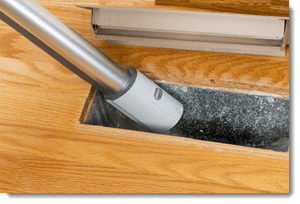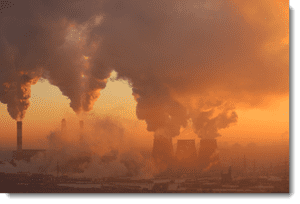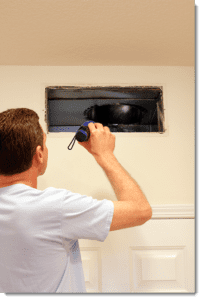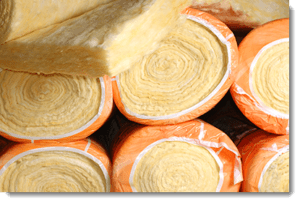Air Duct Cleaning Services
Sonoma - Napa - MarinAir Duct Services:
Sonoma, Napa, and Marin Counties
Phone Now: (707) 539-4533
Everybody wants to breathe clean air, but many people throughout the United States remain unaware of the factors that affect air quality in their homes and offices.
The truth is, there may be more contaminants in the air you breathe than you think. Don’t let that trouble you, though — fortunately, it’s easy to gain a certain degree of control over the air quality in your building. We’ll show you how in this guide and go into detail about some of the benefits you can expect to enjoy when you follow our advice.
- What is Duct Cleaning?
- The Main Causes of Polluted or Unhealthy Air
- Statistics on Air Quality in the USA
- Why do Your AC Ducts Need Cleaning?
- When Should You Have Your Air Ducts Cleaned?
- The Importance of Insulation
- Selecting a Duct Cleaning Service
- Conclusions
1. What is Duct Cleaning?

HVAC systems deliver heated or cooled air to rooms within a building via metal tubes called ducts. At one end of these ducts the furnace and/or air conditioner is connected, and at the other vents or ‘registers’ are positioned to distribute treated air into the structure.
Over time, ducts accumulate dust, hair, mites and other matter and require cleaning through the use of specially designed brushes, vacuums and powerful blowers.
Duct cleaning can take several forms, depending on the nature of the ducts and the condition they are in when you call for service. Most service providers begin by gaining access to the ducts, which occurs in one of two ways: they either make small holes for optical imaging and minor cleaning or remove entire panels for more intensive procedures.
The Truth is, there may be more contaminants in the air you breathe than you think.
Once access has been established, your duct cleaners will use specific tools to remove large items that are clogging the ducts. These tools might include:
- Duct cleaning brushes, which are built to be long and flexible — allowing them to reach deep into otherwise difficult-to-access spaces.
- Hand-held mirrors to see around angles within the ductwork once access has been established.
- Blowguns, air skippers, or air whips — which are simple pneumatic hand-tools used to dislodge clumps of dust or other debris from the sides of your ductwork.
- Powerful vacuums, which suck dislodged material out of your ductwork (usually into a backpack or a truck-mounted unit).
Because many of the tools used to dislodge dirt are pneumatically powered, duct cleaners will also need to be equipped with air compressors. Additionally, cleaners may carry HEPA vacuums to remove collected liquid from ducts as well as solid particles.
2. The Main Causes of Polluted or Unhealthy Air
 Before you can learn much about how to make your air cleaner, you’ll need to know what’s lowering its quality in the first place. The leading causes of indoor air pollution in residential and commercial buildings throughout the United States are as follows — take care to familiarize yourself with each of them and look out for their signs.
Before you can learn much about how to make your air cleaner, you’ll need to know what’s lowering its quality in the first place. The leading causes of indoor air pollution in residential and commercial buildings throughout the United States are as follows — take care to familiarize yourself with each of them and look out for their signs.
Humidity invites more than mold into your home. It can also make it a welcome refuge for dust mites
- Asbestos: asbestos has been linked to several acute health conditions, including asbestosis and even cancer. The United States took measures to regulate asbestos in the Clean Air Act of 1970, but it remains one of the only industrialized nations in the world not to have banned it outright. Today, asbestos is no longer used in the construction of new homes, but it can still be found in many older buildings.
- Formaldehyde: formaldehyde can irritate the eyes and throat, and long-term exposure to it can exacerbate asthma symptoms in sensitive individuals. It is found in various pressed-wood products and may also enter the air in buildings that contain furnishings made with formaldehyde-based adhesives.
- Radon: one of the leading causes of lung cancer in the US, radon is a chemical emitted from natural uranium deposits in rocks and soil. It often enters homes through cracks in walls and floors. One in every 15 homes has radon levels that should be lowered, according to the EPA.
- Smoke: smoke is a leading cause of disease and death and has been well-documented as a significant threat to indoor air quality. Many people erroneously believe that tobacco smoke is the only kind of smoke they need to worry about, but the truth is that all types of smoke are damaging to the lungs — including smoke from burning food, fireplaces, and (yes, it’s true) marijuana.
- Mold, mildew, and bacteria: when the air inside a home is damp, it creates ideal conditions for mold, mildew, and bacteria. These contaminants release spores into the atmosphere that can cause a wide range of symptoms in those exposed to them, ranging from mildly irritating (coughing, sneezing) to more severe (respiratory problems and flu-like symptoms).
- Dust mites and pet dander: humidity invites more than mold into your home. It can also make it a welcome refuge for dust mites, which produce harmful allergens via their droppings. You won’t see the mites themselves (since they’re microscopic), and they won’t bite you — but breathing in those allergens can cause asthma symptoms to worsen and trigger discomfort through itching and watering eyes.
- Carbon monoxide: various appliances around your home produce carbon monoxide as they operate — including space heaters, gas fireplaces, and even stoves. Carbon monoxide has no smell, so it can be extremely dangerous because the inhabitants of a building may not notice that copious quantities of it are building up inside.
- Chemical fumes: household cleaners, paints, and varnishes can all release harmful fumes because many of them are refined from petroleum. As such, they can react with other chemicals in the air to produce particulate matter or ozone. Particulate matter contributes to lung and heart diseases, while ozone forces the airways to constrict and can lead to breathing problems.
3. Statistics on Air Quality in the USA
 We’ve covered some of the numbers above, but here’s a little more data to help you understand the importance of improving indoor air quality in US homes and offices. These statistics show a pressing need for families, business owners and facility managers throughout the country to take a more proactive approach when it comes to cleaning the air in their buildings and protecting their health.
We’ve covered some of the numbers above, but here’s a little more data to help you understand the importance of improving indoor air quality in US homes and offices. These statistics show a pressing need for families, business owners and facility managers throughout the country to take a more proactive approach when it comes to cleaning the air in their buildings and protecting their health.
84% of US homes have detectable levels of dust mite allergens in their beds.
- Secondhand smoke contains more than 7,000 substances and causes over 3,000 lung cancer deaths in the United States each year among non-smokers.
- Wet, damp, or water-damaged areas need to be dried and cleaned in under 48 hours to reduce the likelihood of mold growing in them.
- Reducing the humidity in your building by 30-60% is an excellent way to control mildew growth.
- 84% of US homes have detectable levels of dust mite allergens in their beds.
- The average mattress can hold anywhere from 100,000 to a million dust mites, depending on how old it is and how well it has been maintained.
- Radon is the second most common cause of lung cancer in the US, besides smoking. An estimated 15,000-22,000 lung cancer deaths in the US each year are radon-related.
- 12,000-15,000 people in the US are estimated to die each year because of their exposure to asbestos.
- Formaldehyde levels in both indoor and outdoor air throughout the United States are generally below 0.03 parts per million.
The implications of these statistics should be clear and obvious to anyone who sees them: you can protect your lungs, enjoy greater comfort indoors, and live a longer life by taking steps to make sure the air in any of your buildings is as clean as it can be.
4. Why do Your AC Ducts Need Cleaning?
What does any of this have to do with air duct cleaning? We’re glad you asked. It turns out that one of the best ways to improve indoor air quality is to make sure there’s always fresh and treated air circulating through your home. Proper circulation not only removes airborne contaminants from the air you breathe but also reduces humidity in the atmosphere within your building and mitigates the conditions in which mold and dust mites thrive.
If dirty ducts are left for too long, it can also create buildups that clog them and block airflow entirely.
The ducts in your HVAC system provide some of the most vital infrastructures for air circulation in your entire building, so it’s essential that they stay clean and unobstructed. Clean ducts will allow stale and humid air to travel through the system and be treated while letting fresh air flow freely into various rooms so that the inhabitants can breathe easy and enjoy comfortable conditions. However, if the ducts become dirty, they can affect the quality of the air traveling into your building before it even reaches its destination. If dirty ducts are left for too long, it can also create buildups that clog them and block airflow entirely. If the airflow in a system has been affected, you’re likely to have several pressing problems on your hands. Systems with poor airflow often cause the following challenges for their owners:
- Your HVAC will lose efficiency. If the air treated by the system cannot make its way into the rooms of your building, the thermostat will fail to register that a change is taking place. As such, the system will continue to draw more power than it needs.
- A system that is overworked is much more likely to undergo breakdowns due to component failure. Compressors, coils, and condensers are sensitive parts — if they are forced to work too hard for too long, they are likely to wear out much faster than they would in a well-maintained system.
- You may experience strange smells from any treated air that does manage to make its way into the rooms of your building since this air will have come into contact with the materials that are restricting its flow. By the time it reaches you, it may no longer be fit to breathe at all.
Because of these problems, you may face the following expenses:
- Much higher utility bills than those you would incur from running a clean system with well-maintained ducts.
- Replacement costs for the compressor or other vital parts that have broken down (compressors can cost well over a thousand dollars, so try to avoid this whenever possible).
- Medical costs related to treating illness and irritation that occurs from breathing in dirty or contaminated air.
When you consider these costs against the costs of having the ducts in your building cleaned regularly, the right choice should be obvious: simply arrange for professional duct cleaning, and you’ll be able to avoid much more significant losses in the future.
5. When Should You Have Your Air Ducts Cleaned?
 Knowing that you need air duct cleaning is only part of the solution. The other part is knowing when to have them cleaned. We recommend having the ducts in your home or office cleaned at least once each year to ensure that you will always have open passageways for fresh, treated air to reach you.
Knowing that you need air duct cleaning is only part of the solution. The other part is knowing when to have them cleaned. We recommend having the ducts in your home or office cleaned at least once each year to ensure that you will always have open passageways for fresh, treated air to reach you.
The best way to make sure you never disturb a surface that might release asbestos particles is to have any likely surfaces in your building tested by professionals before work commences.
Asbestos and How to Handle It If you live or work in an older building, you may find asbestos lurking in several places. Homes that were built before 1980 often have asbestos in at least one of the following places:
- Duct cladding
- The ceiling
- Wall plasters
- Wallboard
- Floor and ceiling tiles
- Floor mastics
- Vinyl floor backings
Provided these areas remain undamaged and undisturbed, there may not be any immediate reason for concern. After all, asbestos only poses risks to human health when miniscule fibers of it break off from the main body and enter the air in your home — where occupants can easily inhale it. However, you should be extremely careful not to damage any of the surfaces above when renovating older buildings, and to check them carefully to see if they contain asbestos as you go along. While some of the materials you’ll be examining for asbestos content may be labeled quite clearly, many more will not. The best way to make sure you never disturb a surface that might release asbestos particles is to have any likely surfaces in your building tested by professionals before work commences. Many professionals who conduct asbestos testing also offer safe removal services — however, they may propose to seal the asbestos with special sleeves and foam. Sealing (also called encapsulation) can be an effective way to treat asbestos that is in relatively resilient condition. Asbestos that has begun to deteriorate should always be removed by qualified professionals if possible.
6. The Importance of Insulation
 Insulation offers several valuable benefits to building owners. Firstly, it prevents heat from being lost through crack and gaps in a building’s structure, or through the gaps present in cavity walls. Secondly, it prevents potentially hazardous chemicals such as radon gas from leaking into the building and collecting there, where it can affect the health of those inside. Building owners who take a proactive approach to maintaining their insulation can expect their HVAC systems to draw less power when working to raise or lower the indoor temperature to a given level. As such, their utility bills are likely to be considerably lower than they would be without adequate insulation. It is especially important to insulate ductwork in basements, attics, and other areas where the natural temperature of the space may affect the temperature of the treated air passing through the ducts. If your insulation is a mess, call a professional and have it replaced. Doing so could save you significant amounts of money overall. Notes on Filtration Filtration systems are found in every HVAC system in the United States, and they play an essential role in the proper functioning of these systems. However, many HVAC owners also make the mistake of neglecting to clean or change the filters regularly — which can lead to significant consequences. Your filters catch all kinds of unwanted material and prevent it from entering your building’s air — including dust, dirt, and even smoke. When they aren’t working, these substances can move into the ducts and reduce the quality of the air you breathe. Changing the filters once every month while your HVAC is in use will ensure that the air you end up with indoors is cleaner and better for your health than air from a system with old filters. It will also prevent matter from collecting in the ducts, where it can eventually build up into a blockage causing airflow problems.
Insulation offers several valuable benefits to building owners. Firstly, it prevents heat from being lost through crack and gaps in a building’s structure, or through the gaps present in cavity walls. Secondly, it prevents potentially hazardous chemicals such as radon gas from leaking into the building and collecting there, where it can affect the health of those inside. Building owners who take a proactive approach to maintaining their insulation can expect their HVAC systems to draw less power when working to raise or lower the indoor temperature to a given level. As such, their utility bills are likely to be considerably lower than they would be without adequate insulation. It is especially important to insulate ductwork in basements, attics, and other areas where the natural temperature of the space may affect the temperature of the treated air passing through the ducts. If your insulation is a mess, call a professional and have it replaced. Doing so could save you significant amounts of money overall. Notes on Filtration Filtration systems are found in every HVAC system in the United States, and they play an essential role in the proper functioning of these systems. However, many HVAC owners also make the mistake of neglecting to clean or change the filters regularly — which can lead to significant consequences. Your filters catch all kinds of unwanted material and prevent it from entering your building’s air — including dust, dirt, and even smoke. When they aren’t working, these substances can move into the ducts and reduce the quality of the air you breathe. Changing the filters once every month while your HVAC is in use will ensure that the air you end up with indoors is cleaner and better for your health than air from a system with old filters. It will also prevent matter from collecting in the ducts, where it can eventually build up into a blockage causing airflow problems.
7. Selecting a Duct Cleaning Service
Many HVAC companies offer specific duct cleaning services, but you’ll achieve the best results when you hire one that embodies the following qualities. Fulfillment of these criteria will let you know that your chosen professionals can be trusted to perform high-quality work in your building:
- Their contractors hold a valid C-20 license. The C-20 license is issued by the California State Licensing Board and is required for all HVAC jobs costing more than $500. Practitioners who wish to obtain this license must pass several exams, possess four years of experience at or above a journeyman level, provide a contractor bond and show a certificate of Workers’ Compensation. Holding a C-20 license proves that your service technician has invested a certain level of time and money into developing their skills and their business. As such, you will be able to count on them for more detailed and responsible work.
- Their staff are strong communicators. Ensure that the contractors you choose are willing to talk through their work so that you understand precisely what they intend to do and why it’s necessary before they begin. Their communication skills will allow you to make informed decisions about any work you agree to so that you’ll never feel as though you were talked into service that you didn’t want or understand.
- Their business is well-known and respected within your local area. Always look up a business you intend to hire on Yelp or search for testimonials on their website so that you know how they treat their customers.
The C-20 license is issued by the California State Licensing Board and is required for all HVAC jobs costing more than $500
Follow the steps above, and you should have no problem hiring contractors who use industry best practices and treat you with respect continually during their work.
8. Conclusions
By now, you should know practically everything you need to start improving your indoor air quality by taking better care of your HVAC system. To recap, though: here are five things you can do to better the air quality in your home or office today:
- Change the filters on your HVAC (if you haven’t done so within the last calendar month).
- Clean and dry any damp or wet areas inside your building, taking care to remove any mold that has grown there already.
- Take a walking tour through your home and look for gaps or cracks that might need to be sealed. While you’re at it, inspect the insulation surrounding the ducts.
- Thoroughly clean any surfaces where dust mites could be living: carpets, upholstered furniture, and bedding are three of their most common hideouts.
- Call professionals and make appointments for asbestos testing, radon testing, and air duct cleaning at your first available opportunity.
We’ve seen countless cases where homeowners who believed they lived in clean homes were indeed exposing themselves to potentially harmful conditions daily. Avoid those risks and breathe easy by following the advice listed above.

